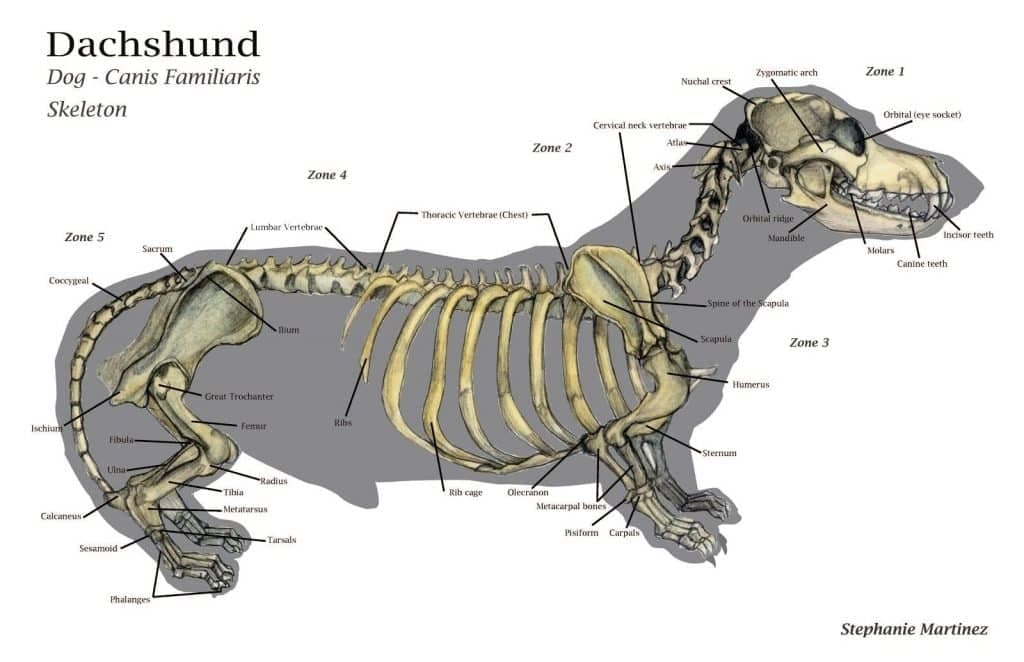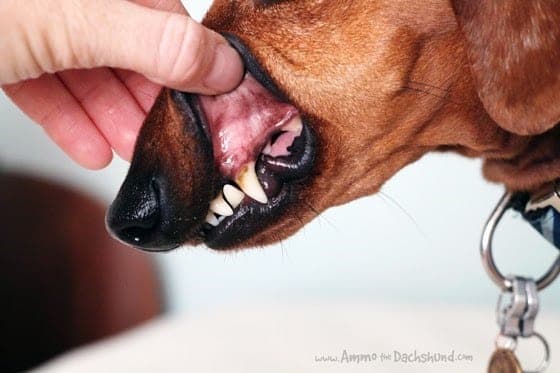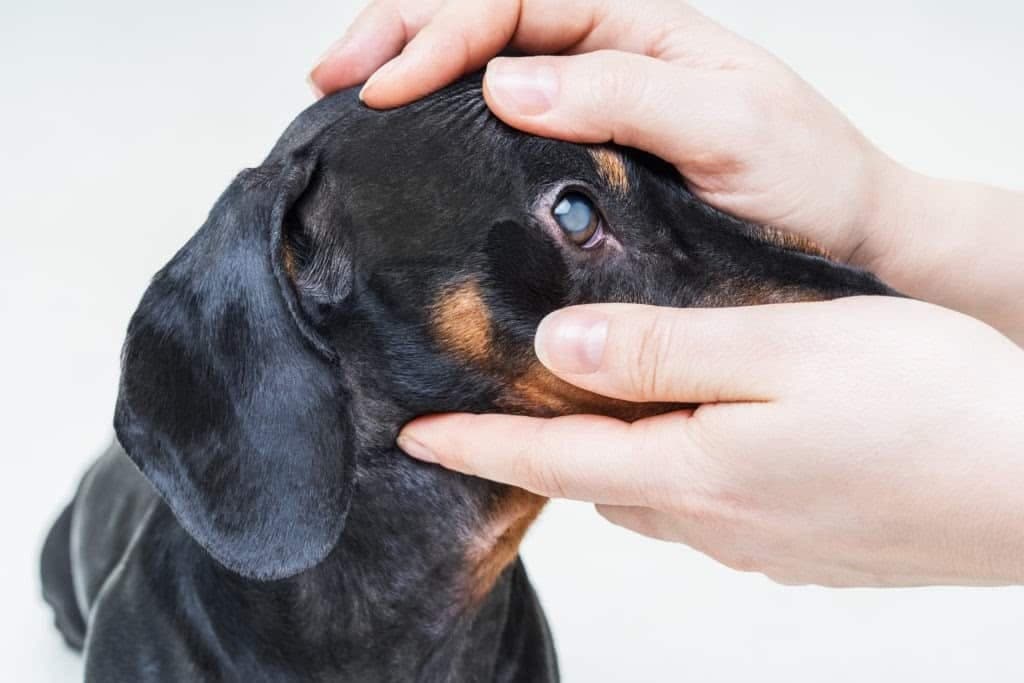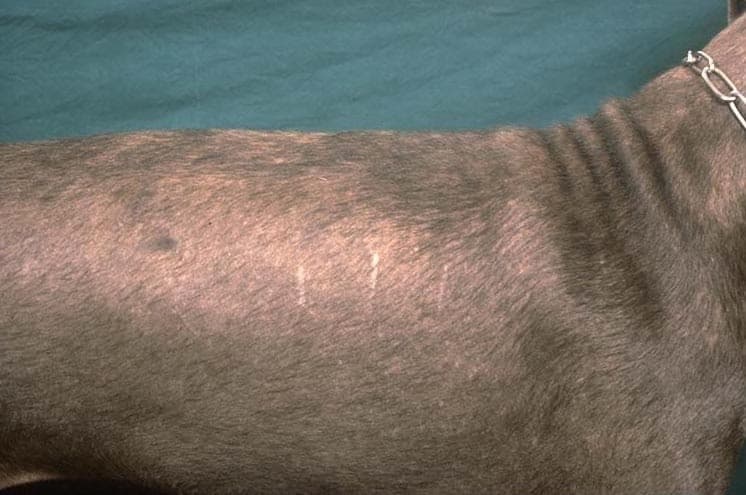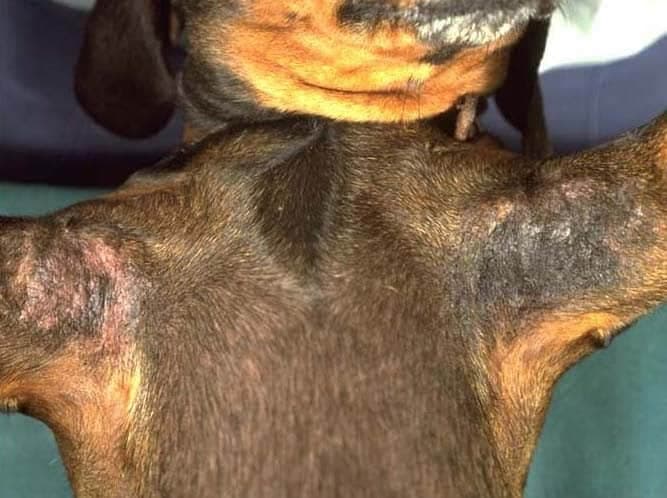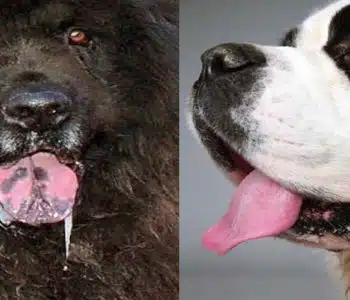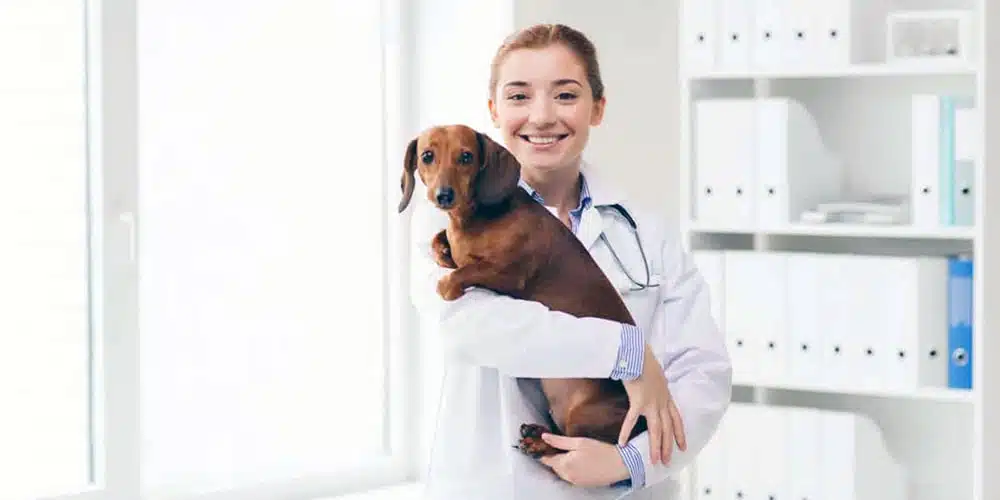
Dachshund Health Issues: How to Care for Your Pup
Everything You Need to Know About Dachshund Health Issues
Credit: loui.minnie.doxie
Are you thinking about getting a Doxie? If so, we’re super happy for you! We are sure you have read our Dachshund breed guide and are now certain this is the right pooch for you! Yippy!
Doxies are incredibly lively, loyal, and loving, which earned them the title of one of the best dog breeds to adopt. If you don’t mind the constant garden digging and yapping, we’re sure you’ll have loads of fun with your new furry buddy! Thanks to Alpha Pawcomprehensive guide, you’ll know exactly how to train, groom, feed, and keep your Dachs happy and healthy.
On a more serious note, it is essential that you also familiarize yourself with all the possible health concerns that can befall your sausage dog. Although we are rooting that your tiny Weiner is a picture of health throughout their life, you still have to know everything about the Dachshund health issues.
What Are the Common Health Problems in Dachshunds?
Credit: codyminidachshund
Doxies are generally considered to be a healthy breed, but owing to their unique body build and specific genetic causes, they are predisposed to a number of health concerns. They tend to live long lives — on average, their life span is 12 to 15 years, although Weiners that lived to celebrate even their 20th birthday are not unheard of.
Dachshunds are prone to several health issues due to genetic factors, and there are even some that are unique to this breed or some of their varieties. Most commonly, they suffer from conditions that affect their:
- Backs
- Hips
- Knees
- Eyes
- Stomach
- Skin
- Teeth
- Heart
There are also specific Miniature Dachshund health issues that are linked to their petite frame, and then there are some conditions that affect mostly old pooches. Here is an overview of the most common Dachshund health problems, including some neurological illnesses that we will cover below in detail.
| Dachshund Health Concerns | |
| Skeletal issues | ● Intervertebral disk disease
● Hip and elbow dysplasia ● Patellar luxation ● Legg-Calve-Perthes disease ● Osteogenesis imperfecta ● Teeth issues |
| Eye problems | ● Cataracts
● Glaucoma ● Progressive retinal atrophy ● Vision loss in Double Dapple Doxies |
| Skin issues | ● Color dilution alopecia
● Acanthosis nigricans |
| Cardiac diseases | ● Degenerative mitral valve disease
● Patent ductus arteriosus |
| Stomach issues | ● Food allergies
● Bloat |
| Other prominent health concerns | ● Cushing’s syndrome
● Obesity ● Diabetes |
Skeletal Issues in Dachshunds
Credit: Pinterest
Dachshunds were bred to have long, low torsos and short legs to be able to squeeze into the underground dens of their prey and hunt it effectively. Such a unique body shape in the canine world was incredibly useful to Doxies while they were hunting hounds, but since they have progressed into a companion dog territory, it has become quite a hurdle.
These sausage-like pooches have an adorable appearance that can capture our hearts at a single glance, but for them, it opens the door for several skeletal problems that run in the Dachshund family.
Intervertebral Disk Disease
Intervertebral disk disease (IVDD) is one of the most prevalent Dachshund back issues, closely linked to their distinctive body build. Doxie’s body type is an example of what is scientifically known as disproportionate dwarfism or chondrodysplasia. This is what sometimes leads to premature degeneration of the spinal discs and IVDD.
IVDD is a hereditary condition — your pooch will either have the problem gene or they won’t. It affects one in every four Doxies, and it can even result in paralysis if left untreated. IVDD is characterized by the following symptoms:
- Neck, limb, or back stiffness
- Dragging of the hind legs
- Obvious pain during running or jumping
- Heightened sensitivity to movement or touch
- Decreased activity
Hip and Elbow Dysplasia
Hip dysplasia is among the most common Dachshund hip problems. It is a genetic condition, but other factors — such as excess weight or an injury — can contribute to it as well. If you see that your dog has difficulty moving and shows lameness in their hind legs, accompanied by “bunny-hopping” and clicking sounds coming from their joints, you should have them looked at by a professional.
Although slightly less predominant than Dachshund hip dysplasia, elbow dysplasia presents itself in a similar manner in your pooch’s forelimbs and also needs prompt medical attention.
Patellar Luxation
Patellar luxation is the dislocation of the dog’s kneecap. It is characteristic of small and toy dog breeds, such as Doxies, Chihuahuas, and Cairn Terriers. Pups that are affected by this condition tend to carry the problem leg for a few minutes at a time. The knee can be returned to its position by a skilled professional — under no circumstances should you attempt to do it yourself.
Legg-Calve-Perthes Disease
Legg-Calve-Perthes disease is a canine orthopedic disease that affects the femoral head, which sits atop the dog’s femur bone. That portion of the thigh bone starts to spontaneously degenerate and slowly progresses to arthritis.
LCP disease mostly affects toy and miniature dog breeds, which means that both your Standard Dachshund and your Miniature Doxie (as well as their mini mixed breed pups) are predisposed to it. It is most common in dogs between five and eight months of age. The disease manifests itself through trouble walking, standing up, or going up and down the stairs in puppers who should otherwise be at the height of their activities.
Osteogenesis Imperfecta
Osteogenesis imperfecta (OI), aka brittle bone disease, is a condition that hinders the dog’s ability to produce a collagen protein that is responsible for keeping the bones elastic and resistant to fracturing. A dog suffering from OI breaks bones and chips teeth easily.
While most dogs need to inherit only one copy of the OI gene from their parents, in Dachshunds, it is a recessive trait. They have to get the mutated gene from both parents to develop fragile bones and teeth. An estimated 12% of all Doxies are carriers, but only if they mate with another carrier dog will their litter inherit the gene. Usually, a quarter of such a litter will become affected by brittle bone disease. That is why it is essential that you get a proper health certificate for your purebred pooch.
Dachshund Teeth Issues
Credit: Ammo the Dachshund
Dachshunds, particularly Miniature Dachshunds, are prone to rapid tooth decay and periodontal diseases. Their dental issues are also the result of chondrodysplasia, as their jaws are too tiny to fit all their munchers comfortably. That leads to teeth crowding and the propensity to get bits of food stuck in between teeth. Doxies frequently develop plaque and tartar buildup and are prone to early tooth loss.
How You Can Prevent or Postpone Your Dachshund’s Skeletal Illnesses
There are several things you can do to protect your Dachs from developing these serious conditions:
- Avoid rough handling. Pick up your doggo with care, and hold them both under the armpits and at the hips when you carry them. Instruct people around you on how to do the same.
- Monitor their weight. The last thing your pooch’s sensitive back or legs need is to carry more weight. Feed your Dachs only the best dry dog food, and follow the serving recommendations to keep obesity at bay.
- Limit their activities. This particularly refers to climbing up and down the stairs and jumping on and off furniture as it can exert unnecessary stress on your Doxie’s back. Consider buying a PawRamp to help them get to their favorite spot on the couch safely.
- Watch where you sit. This may sound funny at first, but it is equally essential. Dachshunds love burrowing under your covers and blankets, and you risk hurting them if you accidentally sit on them.
- Brush their teeth every other day. The best way to keep your Doxie’s pearly whites pearly white is to clean them several times a week. You should also get them some of the top 10 best dog dental chews that are particularly effective for your dog’s dental hygiene.
Dachshund Eye Problems
Credit: Reader’s Digest
Dachshunds are prone to several eye conditions that are common in the majority of dogs, especially when they approach their golden years. Cataracts and glaucoma are the usual suspects for vision impairment in senior pooches.
Cataracts manifest as the clouding or blurring of the dog’s irises. Depending on its thickness, a cataract can cause minimal changes to the dog’s vision or lead to complete blindness if left untreated. Glaucoma is an increase in the dog’s intraocular pressure, which can have dire consequences on the eye’s retina and optic nerve if not controlled with proper medication.
Progressive Retinal Atrophy
One of the most severe eye problems in Dachshunds is progressive retinal atrophy, a genetic condition that also affects many other dog breeds. This one is a sneaky one, as most owners do not suspect anything strange is going on with their pooch in the initial stages of the disease.
When they do, they usually report their dogs have become suddenly clumsy during their evening walks or when walking through dimly lit rooms. If the illness has already taken quite a swing, they notice that their dogs avoid dark places and going out at night. The disease manifests through night blindness at first and slowly progresses into total vision loss.
So far, there is no known cure for PRA, and it usually leads to complete blindness in most dogs within a year or two.
Double Dapple Dachshund Eye and Ear Issues
Double Dapple Dachshunds are at a high risk of vision and hearing impairment. When two dogs that carry dapple genes cross and produce a double dapple litter, those puppies are likely to have some form of eye and ear malformation. This is because the dapple gene is a so-called “dilute” gene, which dilutes the dog’s coat color, often resulting in white coat patches in dapple dogs and sometimes completely white coat color in double dapples. When this gene affects the dog’s eyes and ears, it has a detrimental effect on their formation and function.
Double Dapple Doxies can experience:
- Various degrees of hearing and/or vision loss
- Malformed ears
- Eye defects
- Absent eyes
- Full blindness and/or deafness
Dachshund Skin Issues
Color Dilution Alopecia
Credit: Vetstream
This is another condition related to dilute doggos. If you own a Blue or Isabella Dachshund, the chances are that they could develop color dilution alopecia (CDA) at some point in their lifetime. The first signs typically appear after six months of age. The symptoms of this genetic condition are:
- Hair thinning
- Patchy or complete hair loss
- Itchy skin
- Flaky skin
Fortunately, apart from affecting your dog’s physical appearance, CDA doesn’t pose a health risk in itself — but it can lead to some pretty nasty conditions if you don’t take care of your dilute pooch appropriately. Since their skin is exposed and cracked, it is an ideal breeding ground for bacterial infections. Some of those can lead to the formation of various fistulas, lumps, bumps, and even open wounds on your Doxie’s skin. Their skin can also get sunburns quickly, which increases their risk of skin cancer.
Acanthosis Nigricans
Credit: Vetstream
It is often said that primary acanthosis nigricans (AN) is a condition that is unique to Doxies. Although it is idiopathic in Dachshunds, it can appear in other breeds as well, albeit extremely rarely. It can also appear as a secondary disease that is triggered by another condition in any breed.
The acanthosis nigricans that primarily affects Dachshunds is a pigmentation disorder that causes the skin of the dog’s armpits, legs, and groin to darken and thicken, and sometimes even develop seborrhea. As a consequence, it often happens that those areas of the skin get secondary bacterial or yeast infections. AN usually becomes evident before the pup’s first birthday.
The treatment will depend on whether the disease is a primary or secondary one. Weiners that suffer from the primary AN will manage to control it with topical products, but won’t be able to cure it completely. If your Doxie developed AN in response to a preexisting condition, treating the underlying issue will get rid of the AN as well.
Cardiac Diseases Common in Dachshunds
Degenerative Mitral Valve Disease
Degenerative mitral valve disease (DMVD) is particularly common in small and miniature breed pooches. It usually affects dogs that are eight to ten years old — roughly 30% of dogs develop this condition by the time they turn ten.
If your sausage dog has DMVD, your vet will be able to hear the distinctive left-sided systolic heart murmur and prescribe the appropriate treatment.
Patent Ductus Arteriosus
Patent ductus arteriosus (PDA) is said to be the most common congenital heart defect among canines, but smaller breeds like Dachshunds are 2.5 times more likely to develop it than larger dogs.
This condition is the result of an improperly closed shunt between the aorta and the pulmonary artery. This opening is normal in newborn puppies but is expected to close shortly after birth.
The symptoms will vary depending on how big of a gap remains between those two vital blood vessels. A small PDA can show absolutely no signs at all, and the dog may function and behave normally. Larger PDAs will show significant symptoms, including:
- Difficulty breathing
- Abnormal pulse
- Distinctive, loud heart murmur
- Drowsiness
- Stunted growth and a skinny, sickly appearance
- Intolerance to exercise
Credit: loui.minnie.doxie
Dachshund Stomach Problems
Doxies have sensitive tummies. Since they are so low to the ground, they can get stomach pain and cramps, especially if the weather is rainy or snowy, and they stay wet for a long time during their walks. Like most dogs, they are also prone to specific food allergies, that can manifest either on their skin or as stomach problems. In that case, it would be wise to consider getting them some of the best dog food for dogs with allergies.
Bloat
Bloat is a short, colloquial term for two related health issues — gastric dilatation (GD) and gastric dilatation and volvulus (GDV). The former refers to a stomach that swells from excessive gas, while the latter indicates that the condition has taken a turn for the worse. In that case, the stomach starts twisting on itself, obstructing blood flow to the heart, and jeopardizing the pup’s life.
If you notice any of these warning signs, take your dog to the vet right away:
- Swollen tummy
- Anxious, restless dog
- Pacing
- Dog trying to vomit
- Rapid heartbeat
- Difficulty breathing
- Collapse
Other Dachshund Common Health Problems
Credit: homeatthefarmhouse
Cushing’s syndrome
Dogs that suffer from Cushing’s disease overproduce the hormone cortisol, which, in normal quantities, is vital for their response to stress. Cushing’s, like many other illnesses, affects middle-aged and senior pooches. It is usually hard for a vet to diagnose at first inspection, as it has similar symptoms to numerous other conditions:
- Insatiable thirst and/or hunger
- Accidental and uncontrollable urination
- Hair loss
- Potbelly
- Panting, weary-looking dog
Obesity
Obesity is one of the leading preventable health concerns for dogs across America, and Dachshunds are one of the breeds at the highest risk of becoming obese. Not only would the excess weight be catastrophic for your Weiner’s back and joints, but it can easily contribute to other conditions, such as diabetes, hypertension, and heart problems. Obese pooches also live significantly shorter lives.
Diabetes
Diabetes occurs when the body cannot use glucose (blood sugar) normally. Since glucose is the primary source of energy for body cells, the body resorts to the secondary energy source — the fat — to prevent the starvation of the cells.
Dogs are typically diagnosed with diabetes at seven to ten years of age. Other factors may cause your Doxie to develop diabetes even while they are much younger. Excessive weight and obesity are the main culprits for the early onset of this disease, as well as low-quality food filled with artificial ingredients and a lot of fat. Read all about the worst dog food and the worst wet dog food here.
How to Keep Your Doxie Happy and Healthy
Credit: stanley_the_tiny_dachshund
Despite the extensive list of Dachshund ailments presented above, these doggos are generally healthy. Their chances of suffering from IVDD are high, but other conditions we discussed are much less common and depend on many environmental factors, such as obesity, rough handling, and injuries.
That is why it is instrumental that you devote a lot of love, care, and attention to your little sausage doggo. Here are the essential tips for keeping your Weiner happy and healthy:
- Taking them for regular checkups is crucial. Your pooch’s vet should be your go-to person for any dog-related question you may have, whether it is about their health or something else. Then, there’s Alpha Paw, of course.
- Mind your pup’s diet. If there’s anything you should have deduced from this guide, it is that food and weight play a vital role in your goggie’s health. Opt for the best dry dog food for small dogs, such as Wellness CORE dog food, Dog for Dog food, or Fromm dog food, to name but a few.
- Ration their food. Besides giving your Doxie the healthiest food possible to munch on, you should make sure they don’t gobble it all down at one go. Small portions will do their tummies a world of good, so make sure you divide the daily servings into two to three meals a day, depending on your pup’s age.
- Give your dog the royal treatment. Beside eating premium-quality dog food, your pooch deserves proper grooming to ensure their coat, skin, teeth, and everything else is in tip-top shape!
- Wear them out properly. For your pooch to stay as fit as a fiddle, they need to maintain a regular exercise routine. Luckily, your Dachs has tons of vim and vigor and loves to roam around with you. About two half-hour walks and one short play session a day will do the trick. In case of any existing health conditions, you will need to limit their activities in agreement with their vet.
All in all, remember that knowledge is power. Now that you know what Dachshund health issues you need to look out for, you will be better equipped to take care of your little Weiner. In the event you need more info, hop on over to our care tips for new dog owners and dig in!
Check out Some Dachshund Mixes You Might Love to Love
FAQ for Dachshund Health Issues
How Long Do Mini Dachshunds Live?
Mini Dachshunds typically have a lifespan of 12 to 16 years, but proper care, nutrition, and regular veterinary check-ups can contribute to a longer and healthier life.
What Should I Know About Dachshunds?
Dachshunds are small, elongated dogs known for their unique appearance and playful personalities. They come in three coat varieties: smooth, long-haired, and wire-haired, each requiring specific grooming needs.
What Health Issues Are Common in Dachshunds?
Dachshunds are prone to certain health issues, including intervertebral disc disease (IVDD), obesity, dental problems, and eye conditions. Regular veterinary care, a balanced diet, and exercise are crucial for maintaining their health.
What Health Problems Are Common in Dachshunds?
Common health problems in Dachshunds include back issues, joint problems, and obesity. Regular exercise, a healthy diet, and preventive measures can help mitigate these issues.
Do Breeds That Are Elongated & Low to the Ground Share Common Health Issues?
Yes, breeds with an elongated and low-to-the-ground build, like Dachshunds, often share a common health concern – intervertebral disc disease (IVDD). Their unique body structure makes them more susceptible to spine-related issues.
What Do Dachshunds Usually Die From?
Dachshunds may face various health challenges, but common causes of death include old age-related issues, cancer, and heart disease. Regular veterinary check-ups and a healthy lifestyle can contribute to a longer life.
How Can I Care for a Mini Dachshund?
Caring for a mini Dachshund involves regular exercise, a balanced diet to prevent obesity, dental care, and routine veterinary check-ups. Understanding their specific needs, including spine care, is crucial for their overall well-being.
References
- https://en.wikipedia.org/wiki/Dachshund
- Sauvé, Christopher P., et al. “Oronasal and Oroantral Fistulas Secondary to Periodontal Disease: A Retrospective Study Comparing the Prevalence Within Dachshunds and a Control Group.” Journal of Veterinary Dentistry, vol. 36, no. 4, 2019, pp. 236–244., doi:10.1177/0898756420909657.
- Barandun, Marc A., et al. “Colder Ambient Temperatures Influence Acute Onset Canine Intervertebral Disc Extrusion.” Frontiers in Veterinary Science, vol. 7, 2020, doi:10.3389/fvets.2020.00175.
- Seymour, Alex. Dachshunds: Choosing, Caring for, Grooming, Health, Training, and Understanding Your Standard or Miniature Dachshund Dog. CWP Publishing, 2016.
80% of Dogs Develop Arthritis or Joint Pain by 7 Years old – Here’s How to Protect Them
Most of us train our dogs when they are puppies to jump up on furniture. We think it’s harmless (and easier than always lifting them), but for dogs, couches and beds are very high compared to the size of their bodies.
Every time they jump it compresses their back and applies enormous force to their joints.
It’s no wonder that an incredible 80% of dogs experience arthritis or joint pain by only 7 years old.
Luckily, there is a vet-recommended solution.
It’s the PawRamp by Alpha Paw. An adjustable ramp that allows dogs to safely get on and off couches and beds. PawRamp makes joining you in bed or on the couch effortless and fun.
As a bonus, you can use code SAVE35 to get $35 off the PawRamp today.



